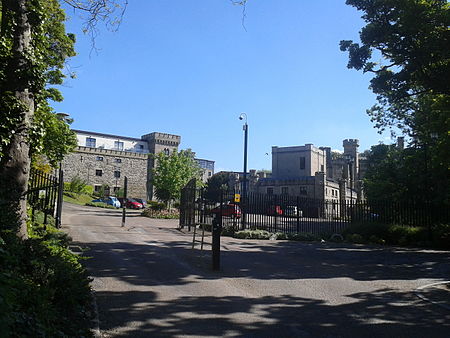Queen's Tower, Sheffield

Queen's Tower is a house in Sheffield, lying on Park Grange Road in the Norfolk Park area of the city. It was designed by Woodhead & Hurst for Samuel Roberts, a local cutler, as a tribute to Mary, Queen of Scots, and completed in 1839.The two-storey building is in a Tudor style, with battlements and several turrets. Its grounds were designed by Robert Marnock and incorporated walls and a window from Manor Lodge, where Mary had been imprisoned.On completion, Roberts gave the Tower to his son as a wedding present. He enlarged the structure in the 1860s. His descendants, who lived in the Tower for several generations, included Samuel Roberts, the Member of Parliament for Sheffield Ecclesall, and his son, also Samuel Roberts, and also a politician.The Tower was converted to flats in 2004.
Excerpt from the Wikipedia article Queen's Tower, Sheffield (License: CC BY-SA 3.0, Authors, Images).Queen's Tower, Sheffield
Tower Rise, Sheffield Norfolk Park
Geographical coordinates (GPS) Address Nearby Places Show on map
Geographical coordinates (GPS)
| Latitude | Longitude |
|---|---|
| N 53.3683 ° | E -1.4568 ° |
Address
Tower Rise
S2 3QX Sheffield, Norfolk Park
England, United Kingdom
Open on Google Maps









